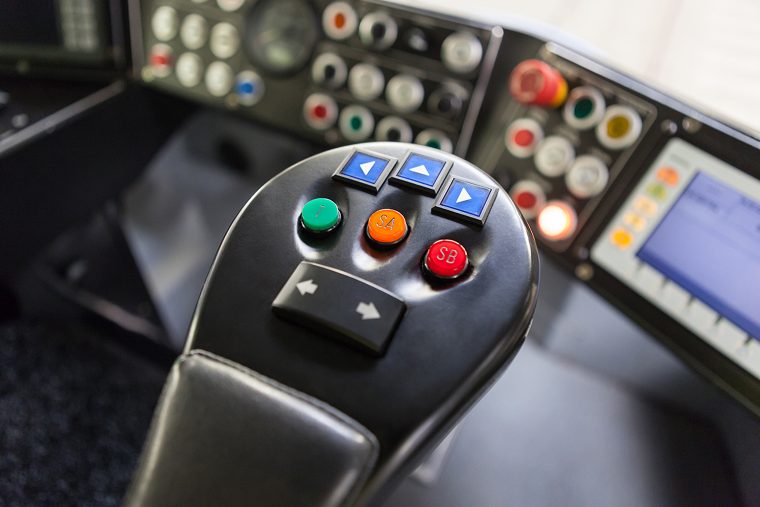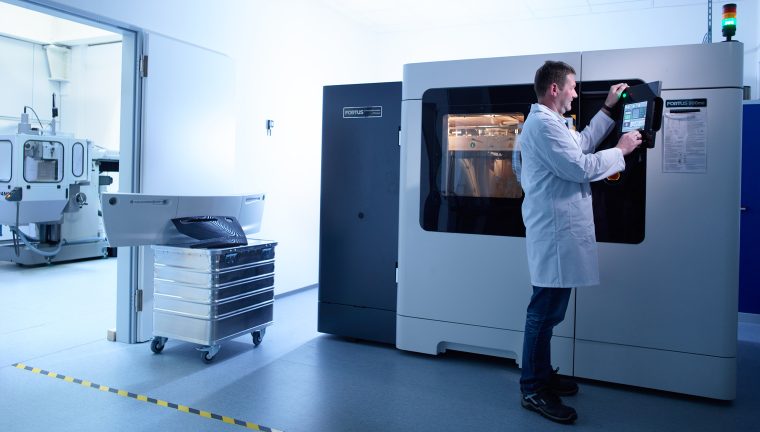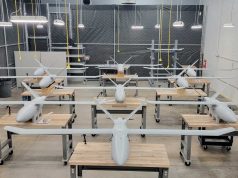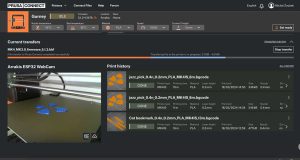The Mobility Division of global engineering and technology solutions leader, Siemens, is pioneering the use of Stratasys FDM 3D printing technology by producing customized final production parts for German transport services provider, Stadtwerke Ulm/Neu Ulm (SWU) Verkehr GmbH.
Using a Stratasys Fortus 900mc Production 3D Printer, Siemens Mobility is able to overcome the barriers of traditional low-volume production by 3D printing final tram parts in a matter of days compared to weeks with traditional methods, while also eradicating the need for costly tooling.
Located in Erlangen, Krefeld, Berlin and Munich, Germany, Siemens Mobility develops technology for vehicles and infrastructure for transport machines. Prior to its 3D printing production capability, Siemens Mobility faced a challenge in being able to meet increasing customer demands for one-off customized parts. For the rail industry, if a replacement part is not in stock, Siemens would need to purchase the machinery or tools to manufacture it. This is not only a lengthy process, but from a cost-perspective, Siemens was limited to only taking orders above 10 parts, with lower volumes unable to justify the production cost.
“Our production services for end-use parts have become much more flexible and tailored to our customers’ needs since we introduced the Stratasys Fortus 900mc Production 3D Printer into our manufacturing process,” explains Tina Eufinger, Business Development, Siemens Mobility Division. “Before we integrated 3D printing into production, we were forced to produce higher quantities of parts in order to make the project cost- effective. For small volume part demands from customers, we would store excess parts until they were used, discarded or became too outdated to use. With the Fortus 900mc, we can now create a design that is 100 percent customized to specific requirements and optimized several times before it is 3D printed. This takes our production time down from weeks to a matter of days, and makes it now cost-effective enough to extend our customer service offering to one-off part production.”

Increasing business performance with advanced manufacturing
This cost-effective low volume manufacturing is being exemplified by Siemens’ work for SWU Verkehr GmbH, which offers transport services across 10 rail networks in the inner city of Ulm. 3D printed parts include customized armrests for the driver seat and housing covers for the ‘coupler’ (the cover of the link between two tram carriages). In order to meet the German rail industry’s criteria for production parts, Siemens is using a flame, smoke and toxicity (FST) compliant synthetic thermoplastic 3D printing material from Stratasys to align with necessary fire protection requirements. This enables Siemens to employ the 3D printed parts – which serve as lightweight and durable transport parts – directly into the trams in Ulm.
Andreas Düvel, Siemens Mobility Sales Representative Customer Service, explains: “Customers such as SWU Verkehr GmbH see ‘availability’ as the most important asset to their business – trams and services need to be available and run constantly throughout the day in order for the transport company to be profitable. We at Siemens are regularly faced with this challenge, however the ability to quickly and cost-effectively 3D print customized parts specific to customer requirements enables clients such as SWU Verkehr GmbH to be closely involved in the design and production of its own parts.
“Through customized additive manufacturing we are achieving maximum customer satisfaction, as the client is actively participating in the creation and optimization of its parts. This would simply not be possible with mass production,” he adds.
Transforming business models with 3D printing
Beyond offering 3D printed production parts for customers in the transport industry, Siemens Mobility division has expanded its business branch online, with customers able to order customized 3D printed parts. Customers who require replacement parts or who need to make changes to existing ones can go online and request the desired part, which is subsequently 3D printed and delivered to them. This has given birth to an on-demand production business model, whereby customers can have part requirements met how and when they need them.
“Siemens is a prime example of how 3D printing can make customized low volume production profitable for businesses – not just for the manufacturer in this case, but also for the end-use customer, the rail industry,” explains Andy Middleton, President, Stratasys EMEA. “With the ability to localize manufacturing and 3D print on-demand, entire supply chains can be redefined with large stocks of obsolete parts no longer required. For the rail industry, the likes of SWU Verkehr GmbH can now work closely with manufacturers to design and optimize 3D printed parts when they need them, ensuring trams are operational and that there is minimal disruption to public services.”
Subscribe to our Newsletter
3DPResso is a weekly newsletter that links to the most exciting global stories from the 3D printing and additive manufacturing industry.




























